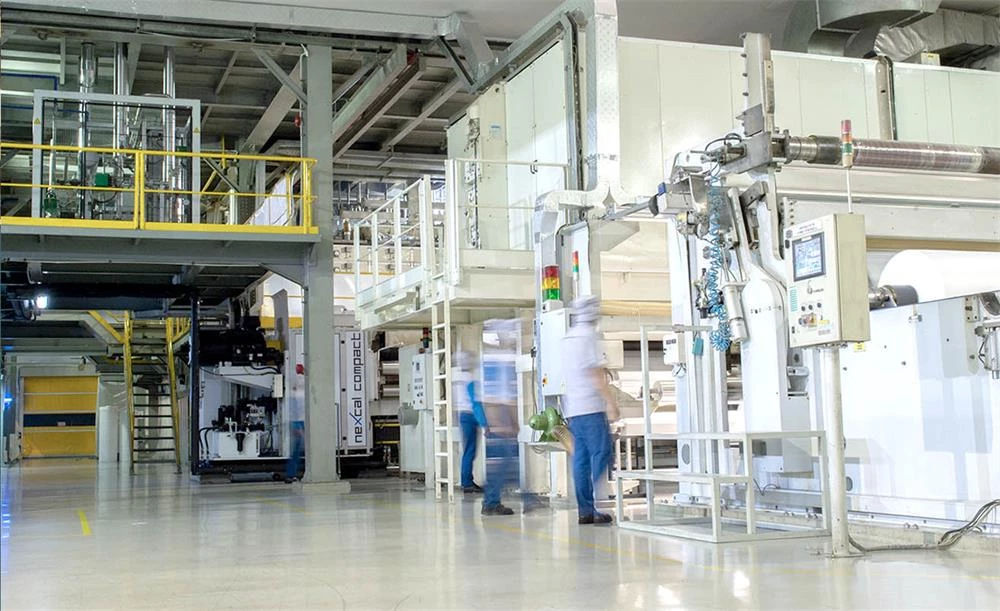
Each link of the meltblown non-woven production line is related to the manufacturing process and quality of the final product, so each operation step cannot be ignored. The following are nine precautions during the operation of the meltblown nonwoven production line.
1. Check whether the temperature control is sensitive, whether the meter is out of order, and whether the cooling water circuit is unblocked, etc. before starting up. Usually use thermometers, cooling water, and other methods for testing. 2. Heat the screw, barrel, and die of the extruder. After the temperature rises to the set temperature, it must be kept warm for about 10 minutes before it can be turned on, so that the temperature of each part of the machine tends to be stable.
3. Be sure to tighten the connecting screws and bolts of each part of the die while it is hot before starting the machine. Before the material is extruded, the operator shall not stand directly in front of the die to pr4event the bolt or screw from breaking and causing injury.
4. When starting to extrude, the screw speed should be slow, and then gradually speed up to prevent overloading and damage to the machine parts when starting.
5. When starting up, add a small amount of material first, and keep the feeding balance, pay close attention to various meter values such as torque when feeding, and wait for the material to be extruded from the die and pull the traction equipment, then gradually increase the amount of material until it is normal Squeeze out.
6. When starting traction, there should be a certain distance between the shaping die and the die head to facilitate the traction. Open the water circuit (be careful not to pour water into the die, otherwise, it will cause the die to discharge abnormally and cause the material to break or block the die), the shape is complex and the cavity is small and the cover of the molding die needs to be opened. ; After confirming that the extruded material is plasticized normally, the material is pulled to the tractor through the traction rope that has been set. Shorten the distance between the set table and the die, cover the cover, and start the vacuum pump. When the extrusion speed and traction speed are basically balanced, observe the profile to be extruded normally, and then reduce the distance between the set table and the die to the ideal value.
7. If it is found that the parison is not formed at the entrance end of the shaping die or the inner ribs adhere to the inner cavity surface of the profile, a pointed tool can be used to poke a few small holes in the non-formed part or the inner ribs of the parison at the entrance end of the shaping die. The small cavity is communicated with the atmosphere, and the parison is open when it enters the shaping mold, which facilitates the formation of negative pressure, and promotes the parison to tightly adhere to the mold wall of the shaping mold.
8. In case of mold blockage (not blocked), the sizing table should be moved back immediately or the traction speed should be increased, or the above two schemes should be implemented at the same time, and then the process should be adjusted to resume normal production. If it is blocked and the implementation of the above scheme is invalid, the setting table should be moved back immediately, and the material should be shoveled along with the setting die, the water vapor of the setting die should be closed, the traction speed should be reduced, and the profile should be slowly pulled out from the setting die. If part of the profile is broken in the shaping mold, the shaping mold needs to be disassembled and the remaining material must be completely removed.
9. When the machine is stopped, it is generally necessary to add the stop material first to squeeze out the production material in the machine, and then stop the machine and disassemble the die head while it is hot for mold cleaning.And we also need to pay attention to the daily inspection of the machine before it runs, to prevent the machine from having problems in the production process, and wasting production materials and time. If you want to know more about the meltblown nonwoven production line after reading the above content, you can get a more comprehensive solution by contacting us.
As a professional manufacturer of non-woven fabrics, we have accumulated many years of technology and experience in this field. Our professional production department and strict quality inspection system can provide customers with high-quality and safe products. At the same time, we can also provide thoughtful service according to customer needs. If you want to buy our meltblown non-woven production line, please contact us immediately!
